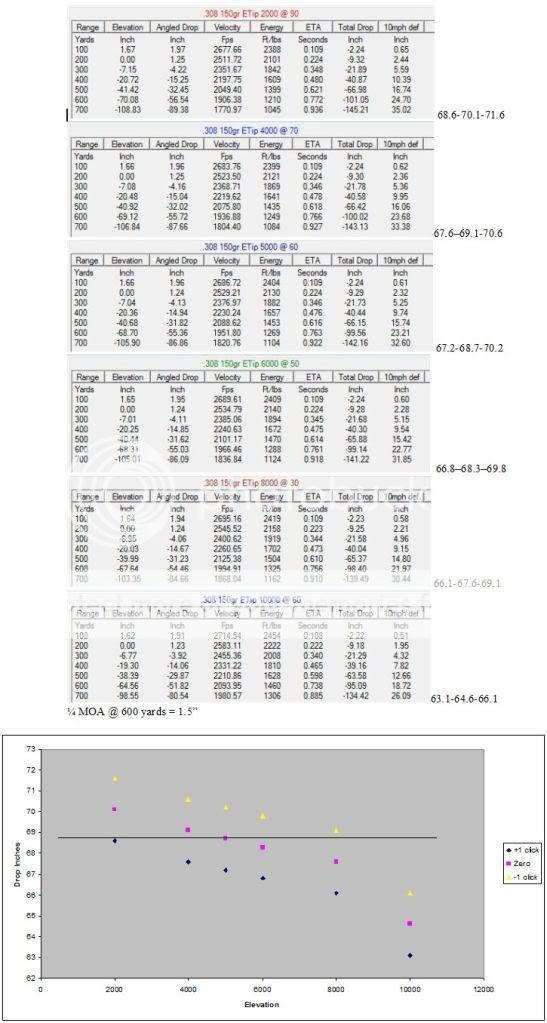Reloder28
Well-Known Member
I finally got my rig to the 600 yard range. With my scope zeroed at 250 yards I cranked it to 600 yards and fired two rounds.
300 WSM 155 Scenar 3285 fps
First shot:
+8" elevation
L6" windage
Second shot:
+11.5" elevation
L4" windage
Total spread 4.25"
This was on a standard 500 yard F Class target. I had no clear aiming point with my scope set on 6X. I simply tried to divide the black into equal quadrants.
What do you make of this? I was pretty pleased as this was my first shot ever beyond 300 yards on a fixed target. Shooting conditions were not optimum. I realize it wasn't near the X. I am open for ways to get it closer to the X.
300 WSM 155 Scenar 3285 fps
First shot:
+8" elevation
L6" windage
Second shot:
+11.5" elevation
L4" windage
Total spread 4.25"
This was on a standard 500 yard F Class target. I had no clear aiming point with my scope set on 6X. I simply tried to divide the black into equal quadrants.
What do you make of this? I was pretty pleased as this was my first shot ever beyond 300 yards on a fixed target. Shooting conditions were not optimum. I realize it wasn't near the X. I am open for ways to get it closer to the X.

